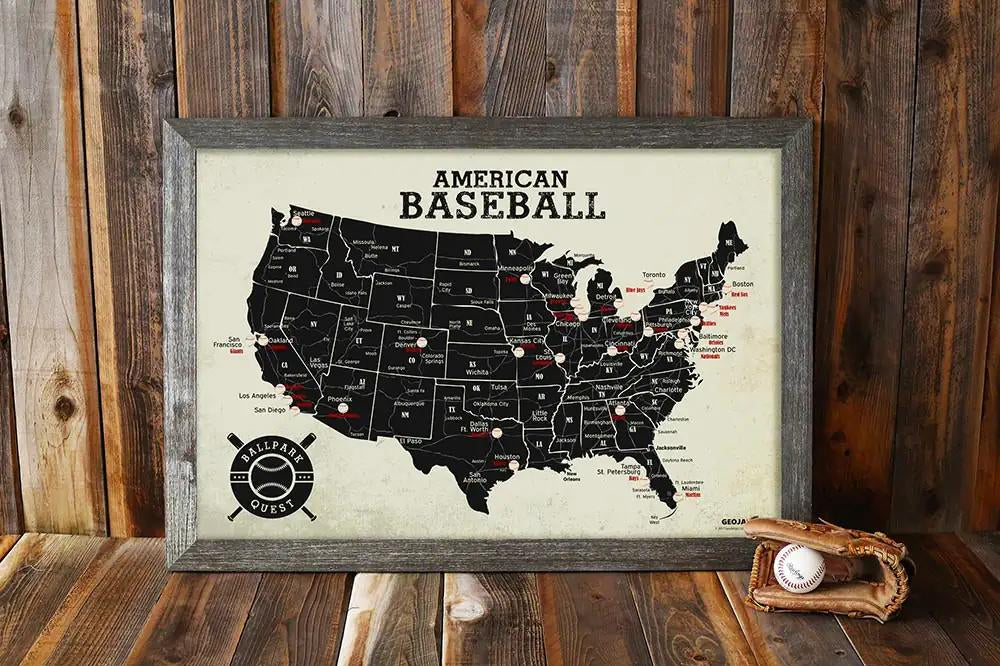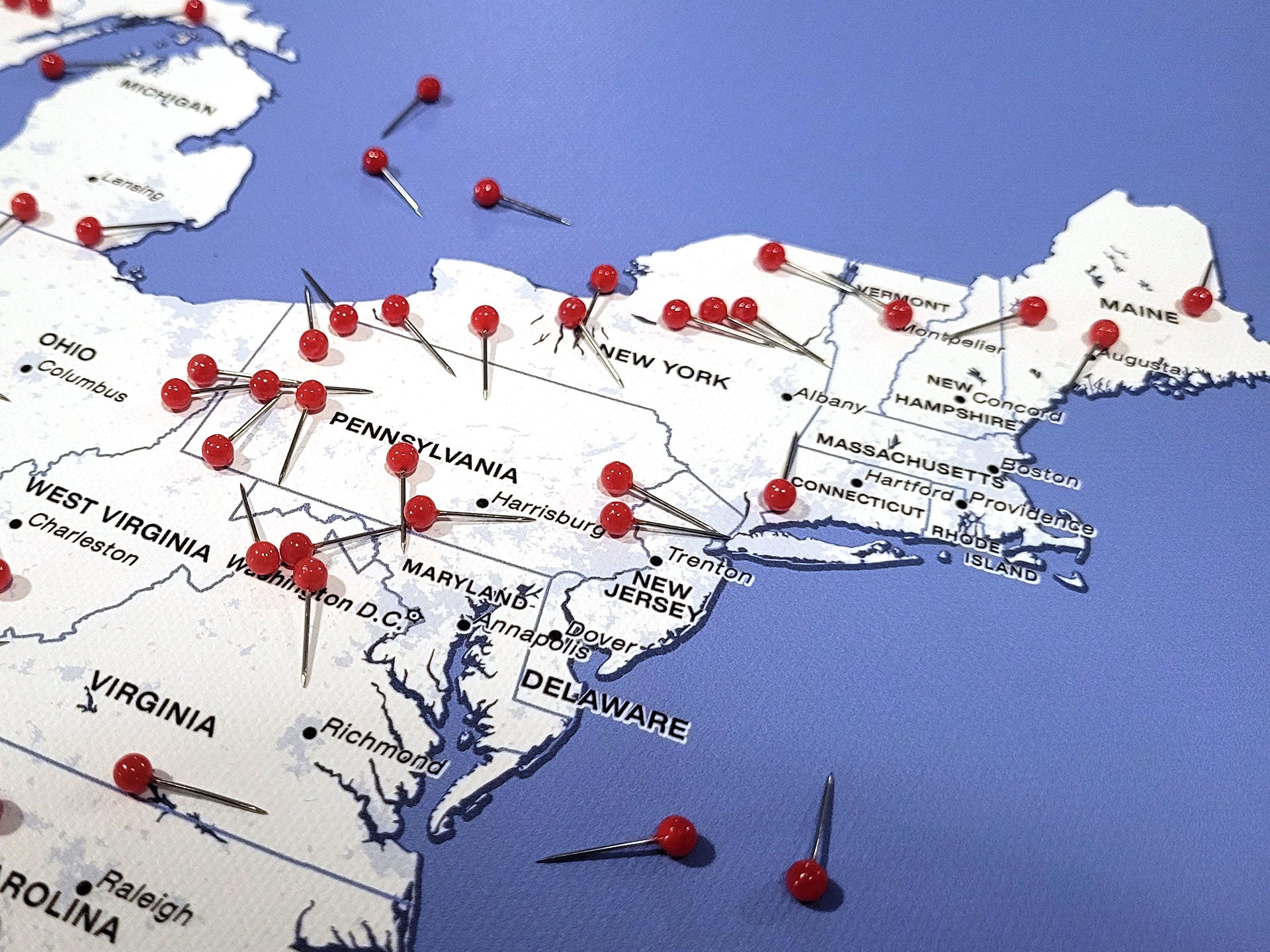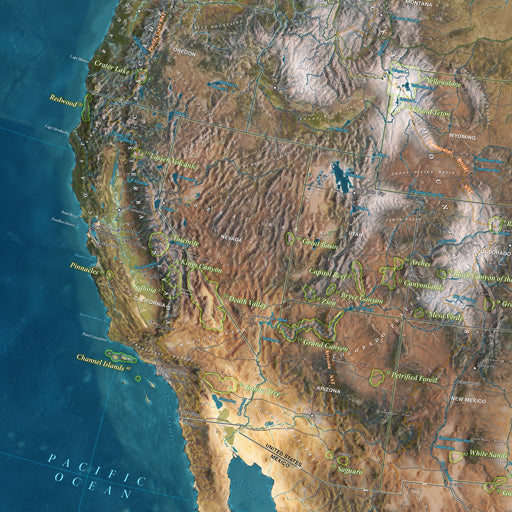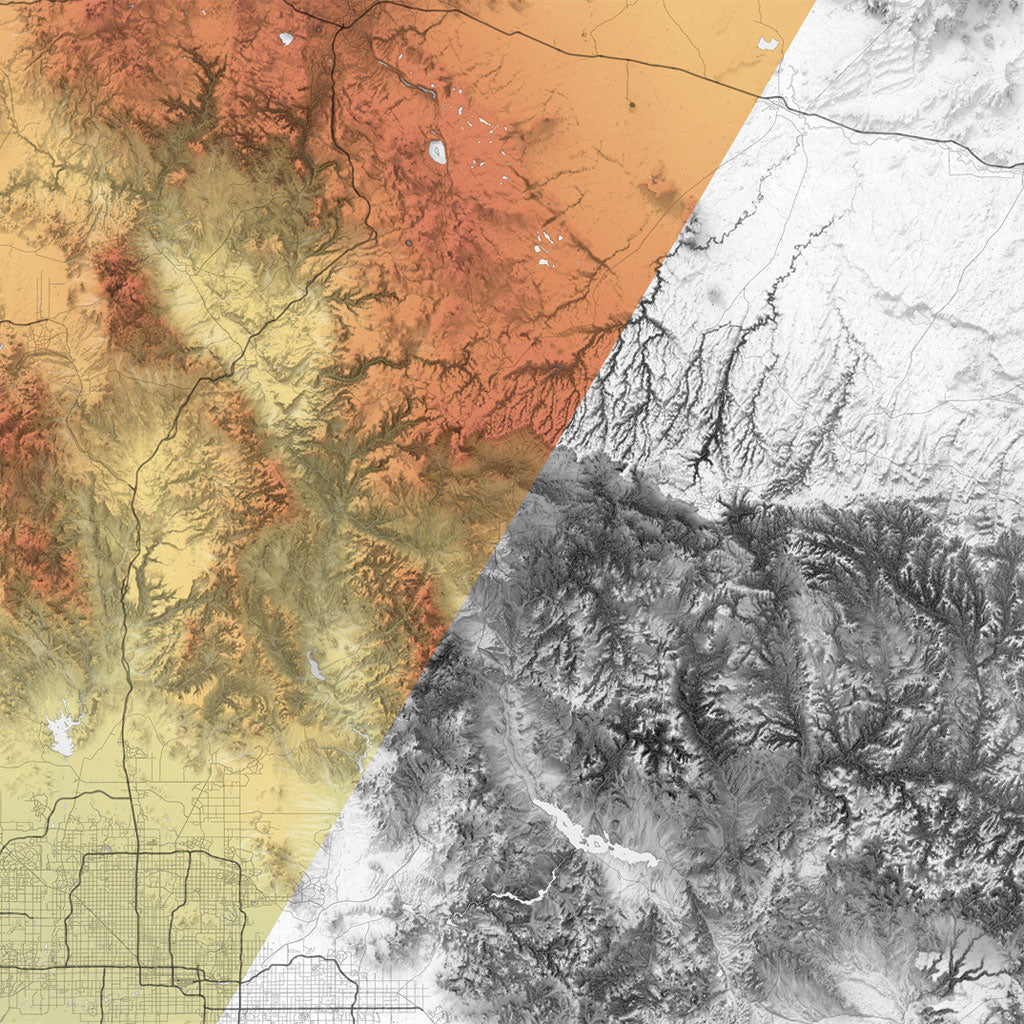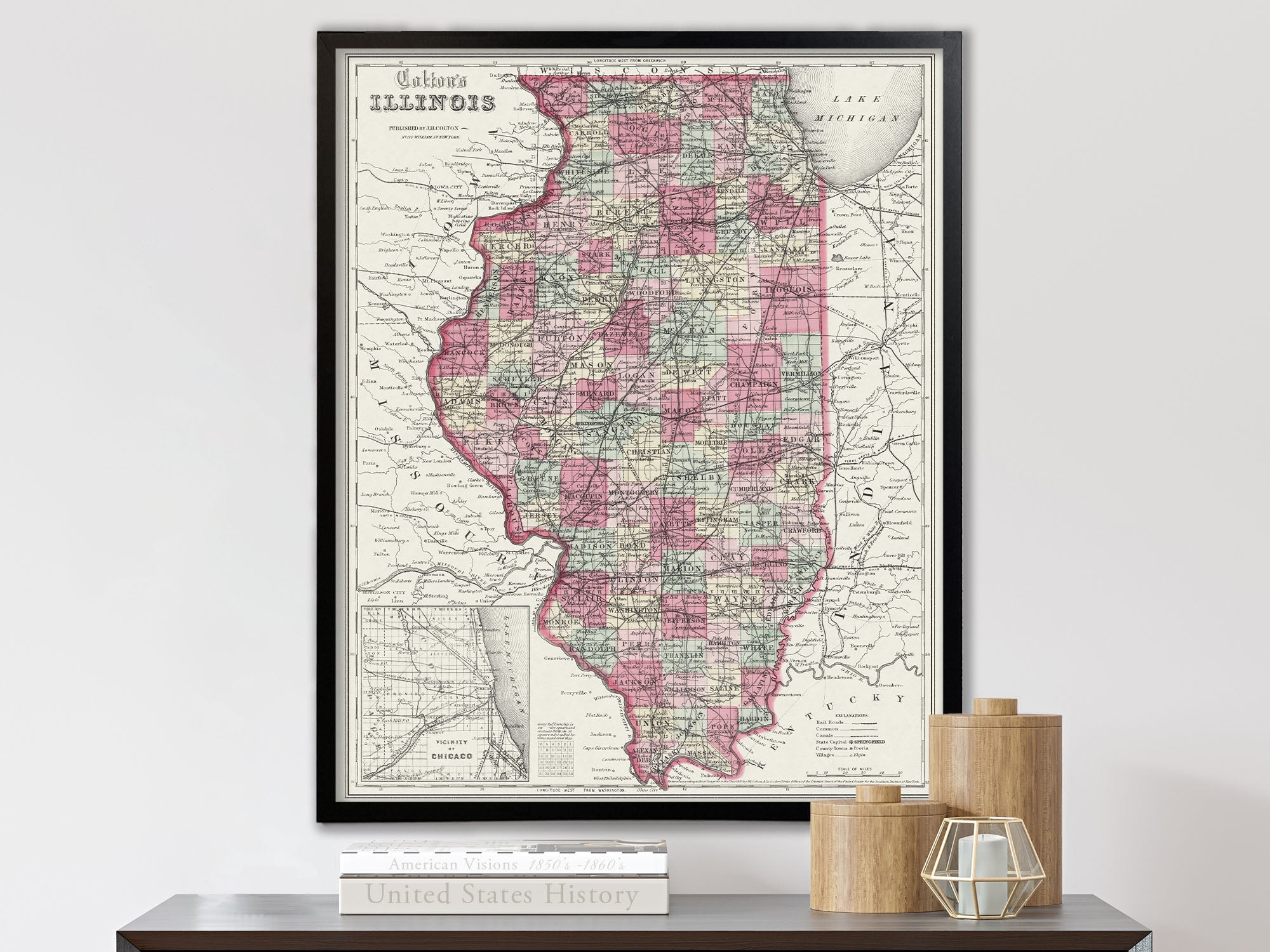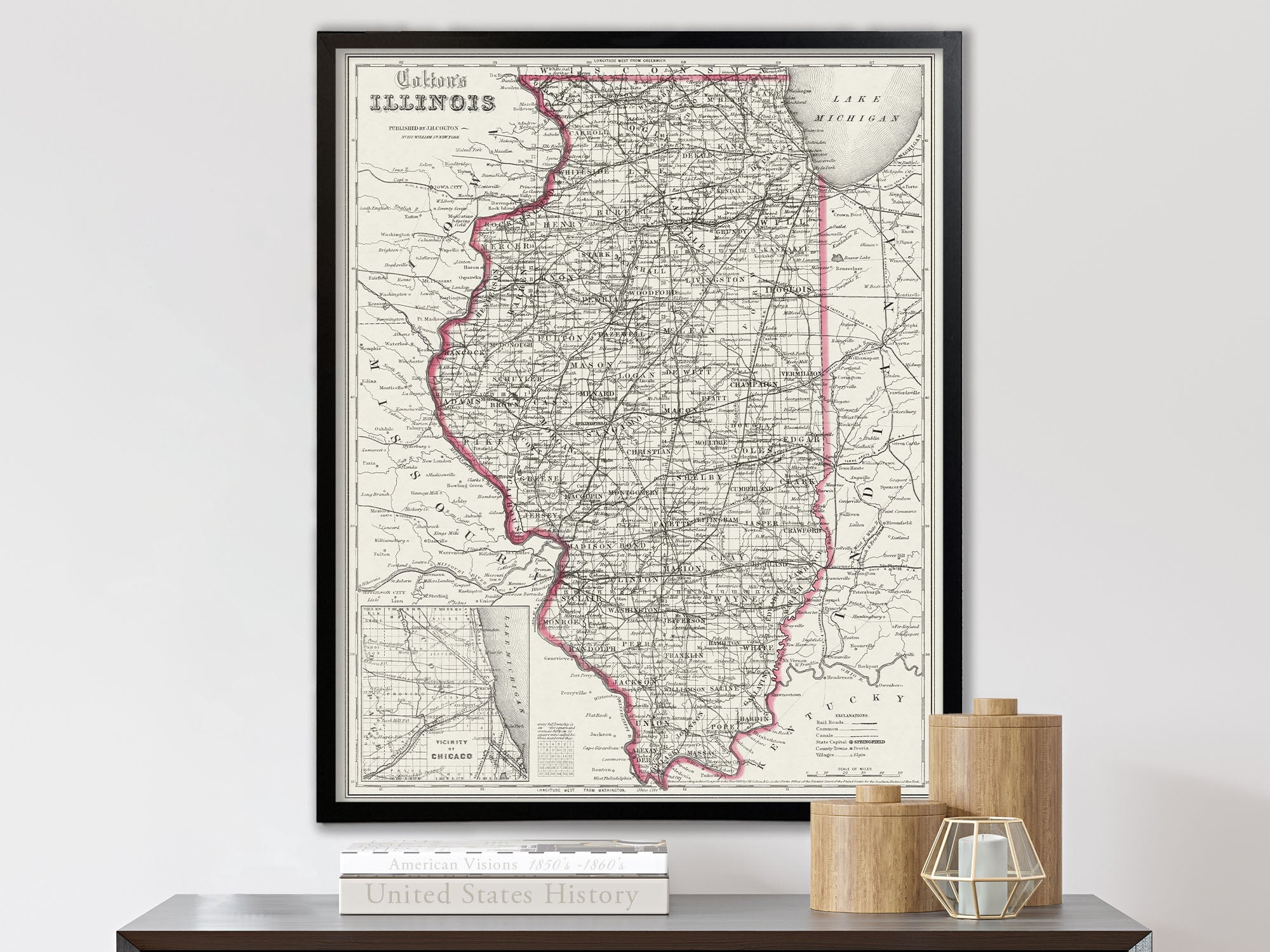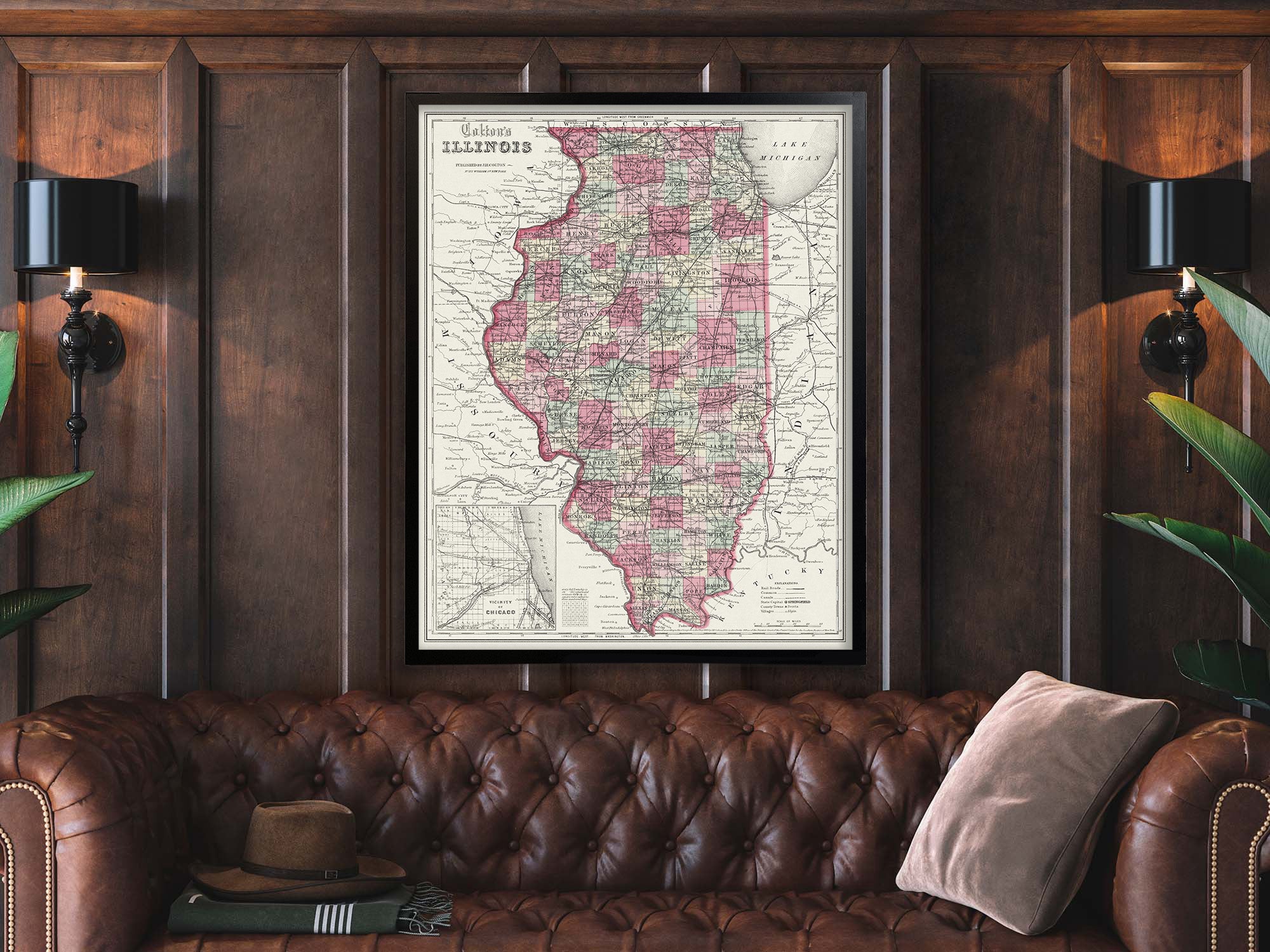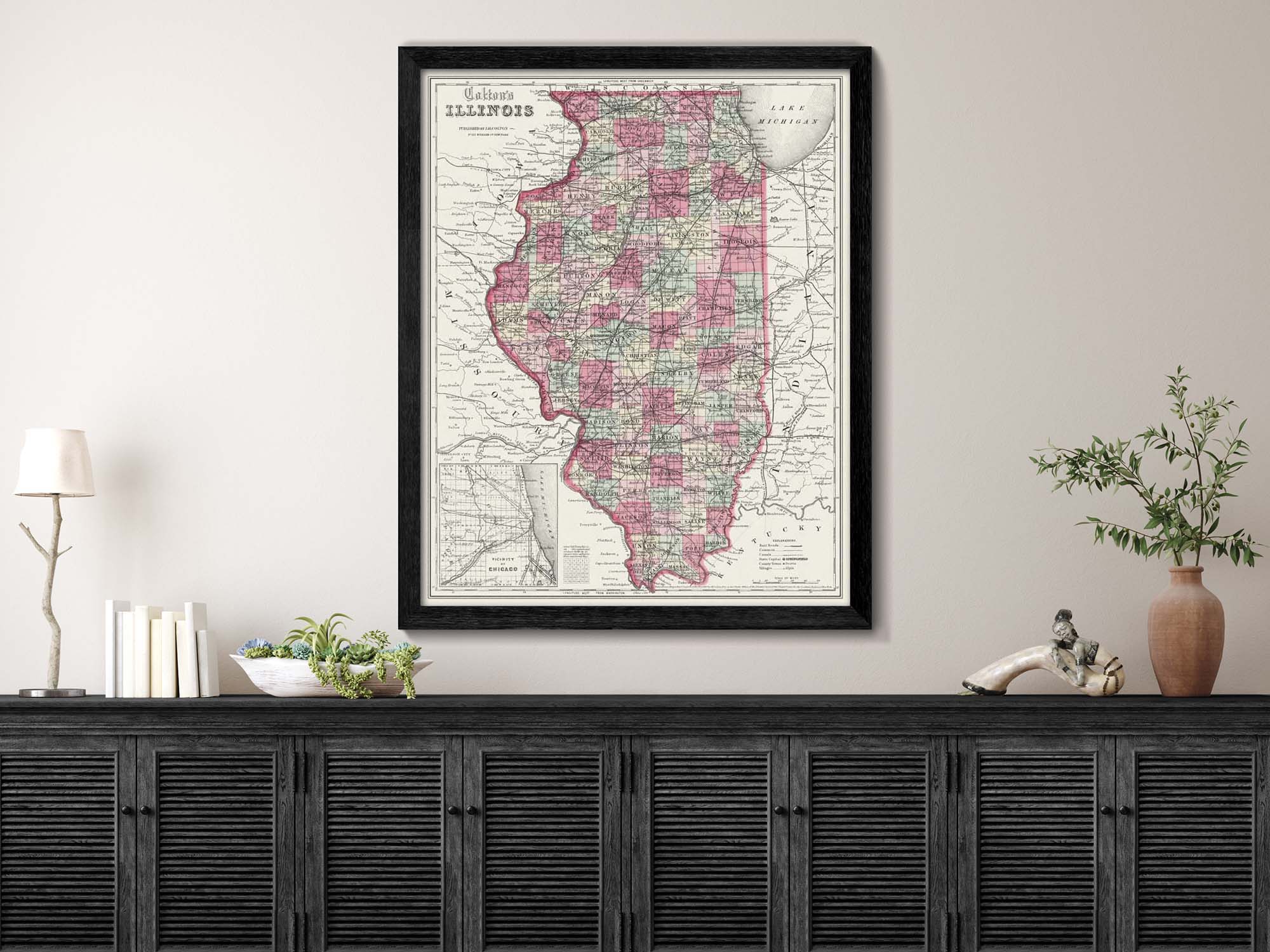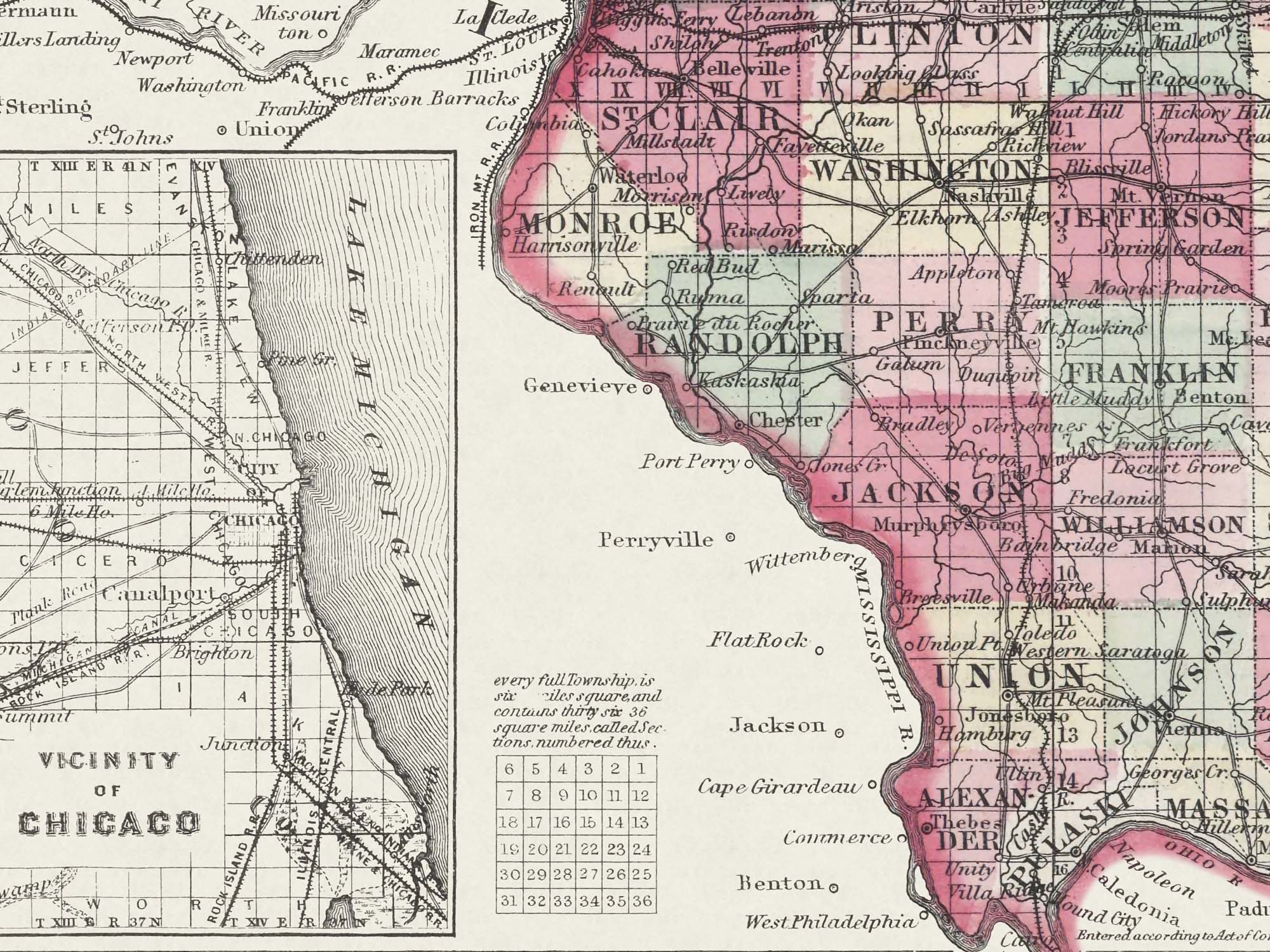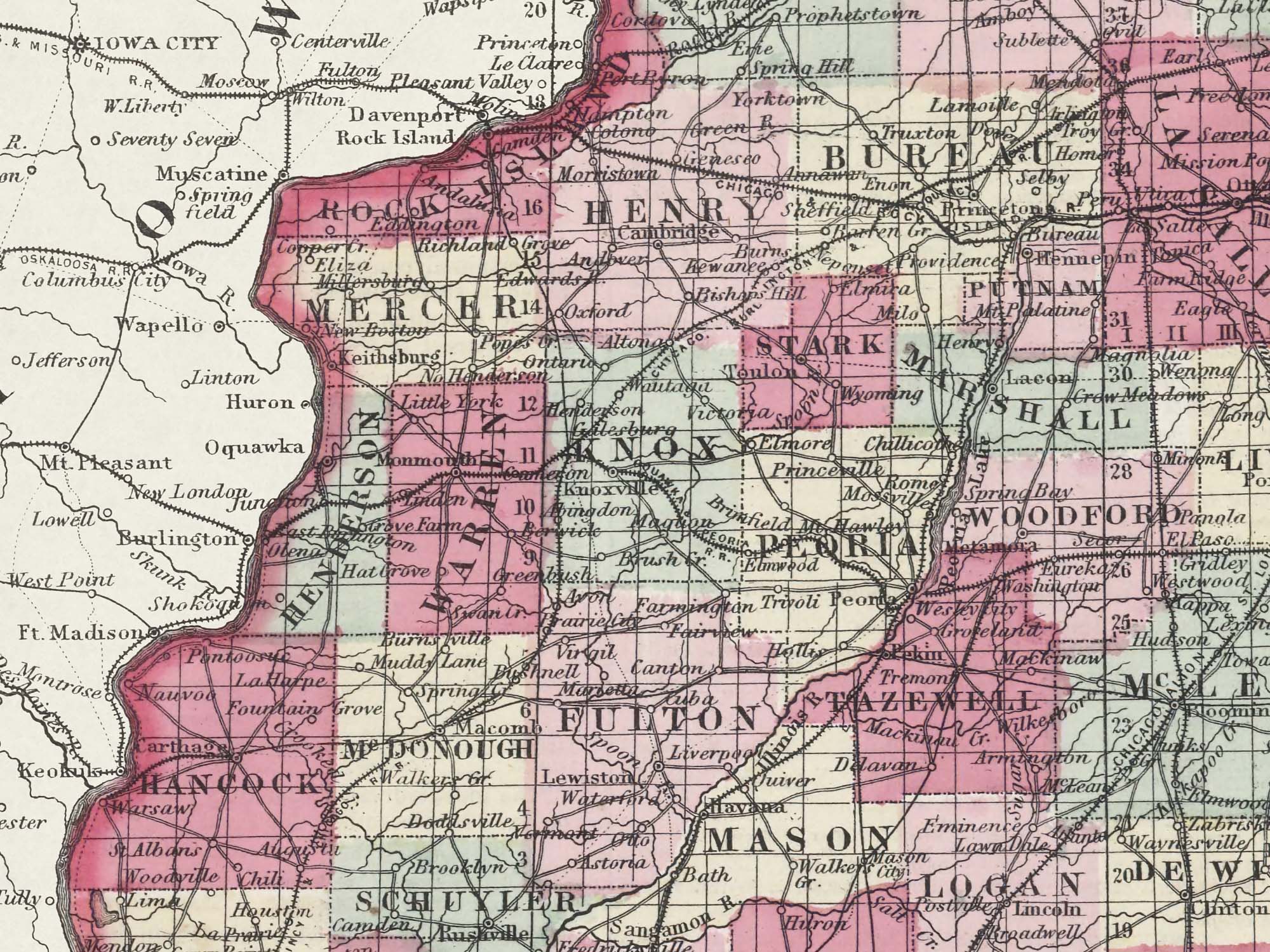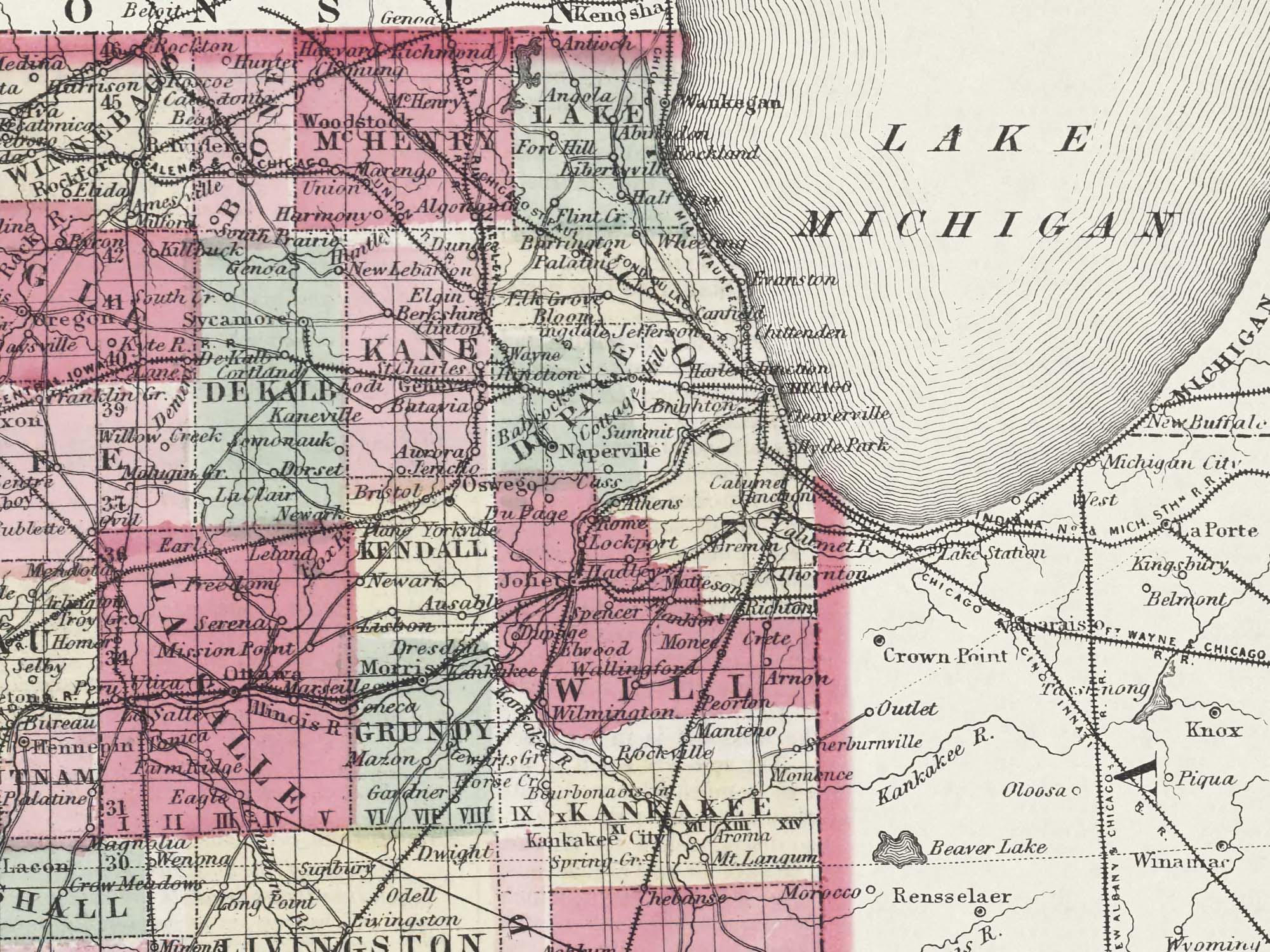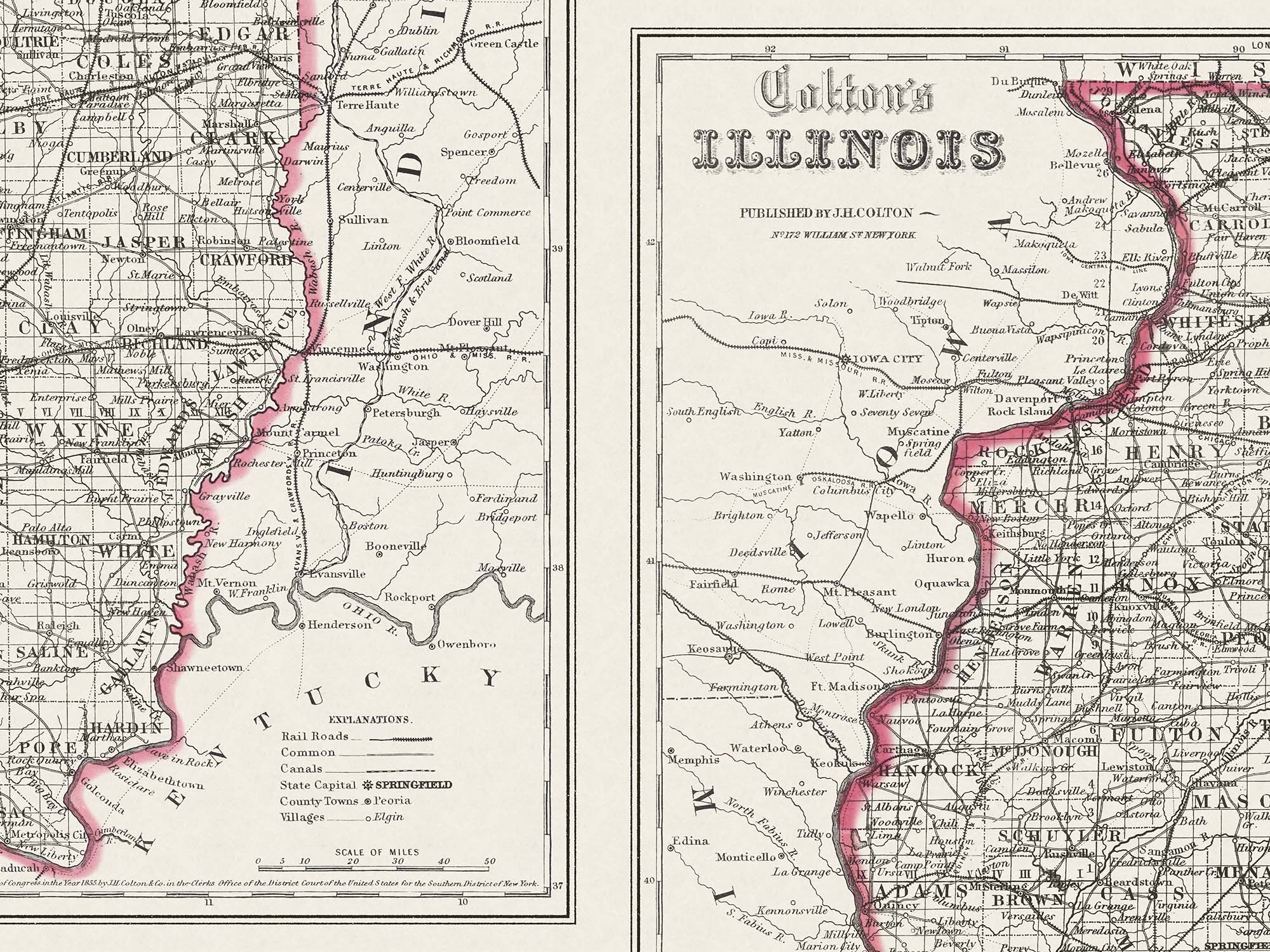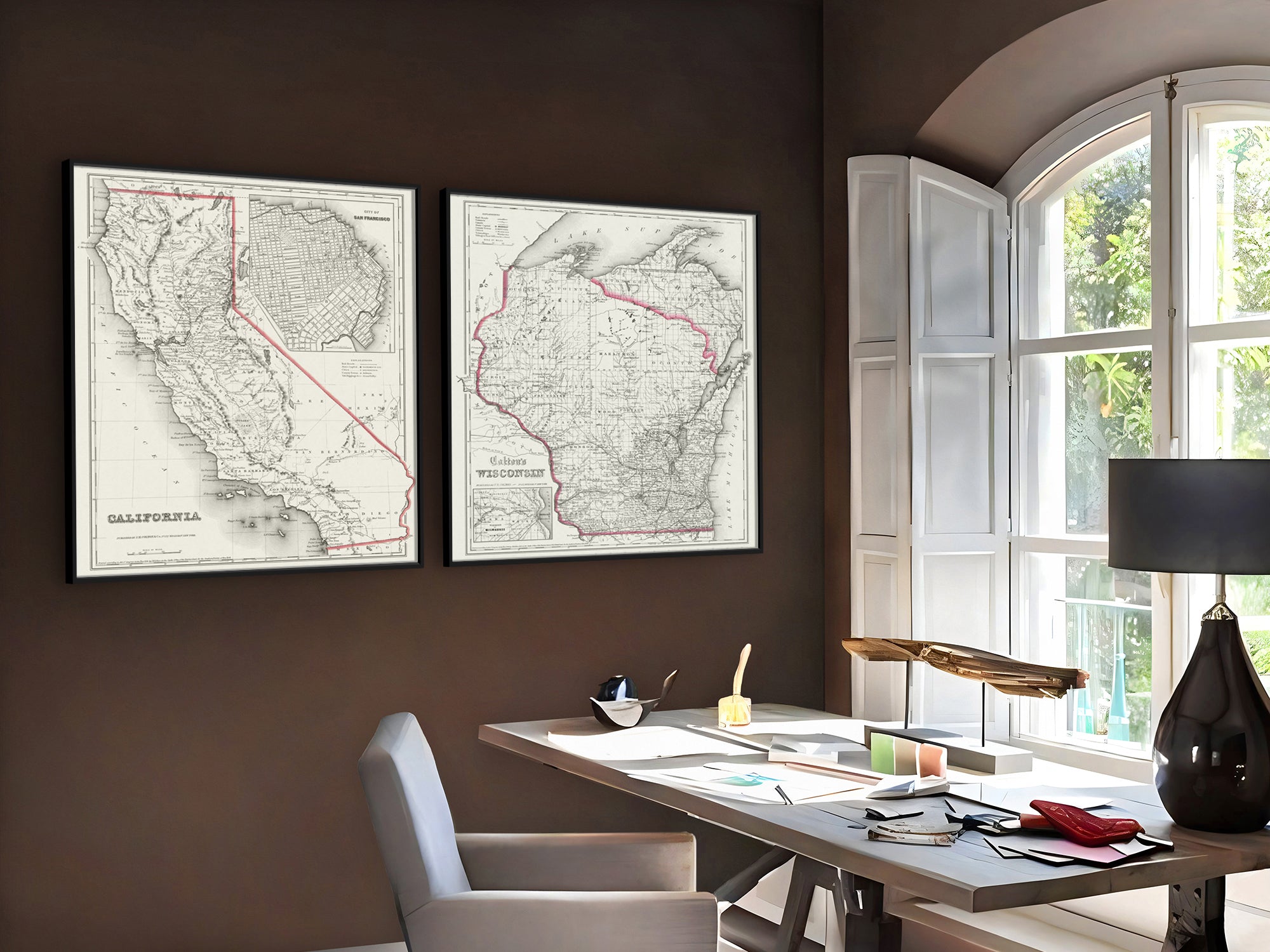This map is a faithful reproduction of the original 1850 map restored to its former glory using the latest digital imaging technology.
Illinois Map 1850's
Standard maps will enter production right away, within the next business day. Larger orders may take more time.
All push pin board maps (framed or canvas wrap) include push pins, are easy to hang, and ship free in the continental US. We'll select the optimal shipping method for fast delivery.
For personalized maps we collaborate closely to guarantee satisfaction. Expect a proof to be sent to you. Your swift responses will facilitate the production and shipping process.
If there are any problems with your map we will take care of you. Returns for all maps are straightforward and hassle-free.
For personalized maps, engaging with the email proofs we send ensures that the final product meets your expectations precisely.
We have 30+ years of cartography experience, meticulously craft each order by hand to ensure excellence, and 100% guarantee your satisfaction. We produce maps that are built to last, with state of the art production and archival quality materials.
Customize with quotes, legends, or dedications using "Personalize Map" options to craft your masterpiece map. Or reach out to us if you don't see the option you want.
We collaborate with you from design to approval of your proof so that you are 100% happy before we print and ship.
Our excellent customer service is always open to you.
Restored 1850's Map
Fine Art Quality
Impressively produced with Archival Inks, Rich Color Depth, and clear and vivid labels. We use premium matte paper.
Expert Craftsmanship
We prepare the map using Fine Art Giclee production techniques. We roll the map in a sturdy tube for shipping to provide a crease-less piece of art.
Illinois Map 1850's
- Description
- Specs & Construction
About the Map: Explore the geographic history of the state of Illinois in this historic map. This map is part of our vintage USA State Map Collection showing the geography of the states in the 1850-1860s and the time of the Civil War.
Restoration: The map is a reproduction of the original map meticulously restored to its former glory using the latest digital imaging technology. Using this technology, we carefully restored the colors, torn edges, creases, smeared writings and more. We enhanced features while keeping the original character and design of the map.
This map is unframed, sold as an art print. Frames are shown for illustration ONLY.
Geographic Details: This historic map shows many details of towns, roads, railroads, and waterways in the 19th century of the United States.
Shows historic cities such as Chicago, Springfield, Aurora and more!
Explore the historic boundaries of the cities, counties, and states that have changed over the years. Discover physical changes in the geography - such as former lakes and canals used for transportation and agriculture.
Available Sizes: For an impressive display and maximum readability, choose the largest size available.
Smaller size prints make excellent wall art in groups. Please note that there is no guarantee that small text will be legible in print.
Great Gift For: Interior Designers, Teachers, History Buffs, Anniversaries, Birthdays, Friends, Family, and many more!
Production and Shipping Times: The amount of time it takes for your map to arrive depends on where you live and how fast you approve the proof if you’ve ordered a custom map. See Production & Shipping.
Quality and Guarantee: We stand behind our work and guarantee the construction and quality. Contact us if you have any problems with your map and we will coordinate to ensure you are very happy with your purchase.
Materials and Production: This reproduction is printed on Fine Art Museum Quality Paper with giclée inks. The thick paper is archival quality and acid-free with vivid color definition.
Paper details:
- 10 mil thick
- 230 gsm weight
- Museum Quality Matte finish
Made in the USA by a USA Small Business and Professional Geographer & Cartographer.
Shipped in a tube and rolled to eliminate creases.
Why choose GeoJango Maps
- We have a lifelong passion for maps, backed by 30+ years of cartography experience and Master's Degrees in Geographic Information Systems (GIS) from Penn State University and Environmental Science from the University of South Florida.
- Our incredible investment into the design of our maps results in unparalleled detail that matters: they will educate you, and grow with you as you travel the world and track your travels—where other maps miss the mark.
- We’ve built the leading map production studio in the USA and use exclusively USA-made materials. Each pin map is proudly crafted by hand, printed by us on the finest materials, mounted on museum-quality Gatorfoam, and carefully framed just for you.
History of the Time
The 1850s were a significant and transformative decade in the history of Illinois, as the state navigated economic growth, political shifts, and the evolving debates over slavery that would lead to its role in the American Civil War.
Economically, the 1850s marked a period of expansion and industrialization for Illinois. The state's strategic location at the crossroads of major waterways and railroads facilitated trade and commerce, contributing to its economic development. Chicago, in particular, emerged as a major transportation hub and industrial center. The completion of the Illinois and Michigan Canal in the 1840s further boosted the state's trade connections, linking the Great Lakes to the Mississippi River.
The growth of industry, manufacturing, and agriculture led to an increase in urbanization. Cities like Chicago experienced rapid population growth and the development of diverse neighborhoods. The state's natural resources, including coal and fertile soil, supported the expansion of industries such as mining, manufacturing, and farming.
The 1850s were a period of political changes and debates, both at the state and national levels. The issue of slavery was a divisive topic, and Illinois reflected the broader tensions between the North and the South. The state's "Free Soil" sentiment, rooted in its prohibition of slavery in the state's constitution, aligned it with the antislavery movement. The debates surrounding the extension of slavery into new territories, as well as the controversial Fugitive Slave Act of 1850, intensified the national discussion.
Illinois was also a significant player in the newly emerging Republican Party, which opposed the expansion of slavery into the western territories. Abraham Lincoln, a prominent Illinois lawyer and politician, emerged as a key figure in the Republican Party during the 1850s. His debates with Stephen A. Douglas, known as the Lincoln-Douglas debates, were pivotal in shaping public opinion on the slavery issue and solidified Lincoln's national reputation.
The decade also witnessed the emergence of social and cultural developments. The state's commitment to education led to the establishment of public schools and the growth of universities, including the founding of the University of Illinois in 1867. Religious and social reform movements gained momentum, reflecting the broader changes and values of the time.
As the 1850s came to a close, the nation's political and sectional divisions escalated, and Illinois found itself on the brink of a significant role in the Civil War. Abraham Lincoln's election as the 16th President of the United States in 1860 was a turning point, triggering the secession of southern states and leading to the eventual outbreak of war.
In conclusion, the 1850s were a transformative period for Illinois, marked by economic growth, political debates, and the looming specter of the Civil War. The state's industrialization, its role in the antislavery movement, and its contributions to the Republican Party set the stage for its pivotal role in shaping the nation's history in the years to come.


